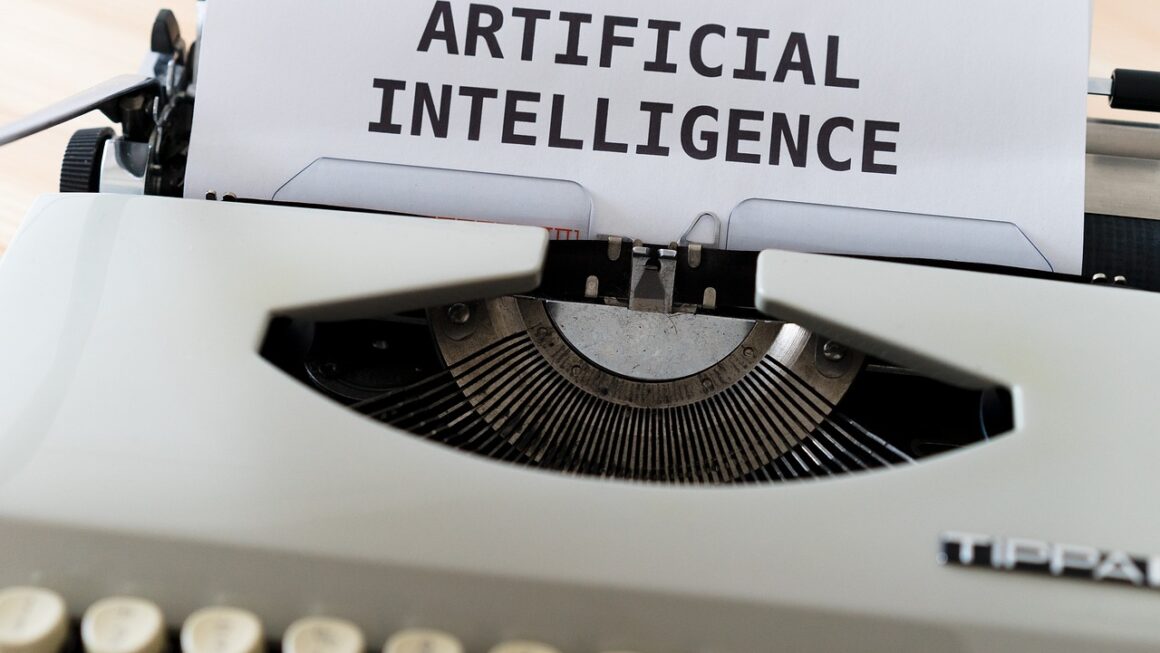The rapid advancement of artificial intelligence (AI) is transforming industries and reshaping our lives at an unprecedented pace. As AI systems become increasingly sophisticated and integrated into critical aspects of society, the need for robust AI governance frameworks has never been more urgent. This post explores the multifaceted landscape of AI governance, delving into its key components, challenges, and best practices to ensure AI is developed and deployed responsibly, ethically, and in a way that benefits all of humanity.
Understanding AI Governance
What is AI Governance?
AI governance refers to the policies, frameworks, and processes designed to guide the development and deployment of AI systems. It encompasses a wide range of considerations, including:
- Ethical principles: Defining and upholding ethical standards for AI development and use.
- Risk management: Identifying and mitigating potential risks associated with AI systems, such as bias, discrimination, and security vulnerabilities.
- Compliance: Ensuring that AI systems adhere to relevant laws, regulations, and industry standards.
- Accountability: Establishing mechanisms for assigning responsibility and addressing harms caused by AI systems.
- Transparency and explainability: Promoting openness and understanding of how AI systems work and make decisions.
Ultimately, AI governance aims to ensure that AI is developed and used in a way that is aligned with human values and societal goals.
Why is AI Governance Important?
Effective AI governance is crucial for several reasons:
- Mitigating Risks: AI systems can perpetuate and amplify existing biases, leading to unfair or discriminatory outcomes. Governance frameworks help identify and mitigate these risks. For example, using diverse datasets and employing bias detection tools during the development phase.
- Building Trust: Transparency and explainability are essential for building public trust in AI systems. Governance promotes the development of AI that is understandable and accountable. Consider a bank using AI to make loan decisions. Governance would ensure that the system can explain why an application was rejected, fostering trust with customers.
- Ensuring Compliance: AI systems must comply with relevant laws and regulations, such as data privacy laws and anti-discrimination laws. Governance frameworks help organizations navigate this complex legal landscape.
- Promoting Innovation: Clear and consistent governance frameworks can foster innovation by providing a stable and predictable environment for AI development. This allows developers to focus on creating beneficial AI applications without fear of unforeseen legal or ethical repercussions.
- Safeguarding Human Rights: AI systems can impact fundamental human rights, such as privacy, freedom of expression, and due process. Governance frameworks help protect these rights.
Key Stakeholders in AI Governance
AI governance requires collaboration among various stakeholders, including:
- Governments: Developing and implementing AI regulations and policies.
- Businesses: Implementing AI governance frameworks within their organizations.
- Researchers: Conducting research on AI ethics and safety.
- Civil society organizations: Advocating for responsible AI development and deployment.
- Individuals: Understanding their rights and responsibilities regarding AI.
Key Components of an AI Governance Framework
Ethical Principles and Values
Establishing a clear set of ethical principles and values is the foundation of any AI governance framework. These principles should guide the development and deployment of AI systems and reflect the values of the organization and society. Common ethical principles include:
- Beneficence: AI systems should be designed to benefit humanity.
- Non-maleficence: AI systems should not cause harm.
- Autonomy: AI systems should respect human autonomy.
- Justice: AI systems should be fair and equitable.
- Transparency: AI systems should be transparent and explainable.
For example, a hospital developing an AI diagnostic tool should ensure that the tool is designed to improve patient outcomes (beneficence), does not discriminate against certain patient groups (justice), and provides clear explanations of its diagnoses (transparency).
Risk Assessment and Mitigation
A comprehensive risk assessment process is essential for identifying and mitigating potential risks associated with AI systems. This process should involve:
- Identifying potential risks: Analyzing the potential harms that AI systems could cause, such as bias, discrimination, security vulnerabilities, and privacy violations.
- Assessing the likelihood and impact of each risk: Evaluating the probability of each risk occurring and the severity of its potential impact.
- Developing mitigation strategies: Implementing measures to reduce the likelihood or impact of each risk.
- Monitoring and evaluating the effectiveness of mitigation strategies: Continuously monitoring the performance of AI systems and adjusting mitigation strategies as needed.
Imagine an AI system used in recruitment. A risk assessment might reveal a bias against female candidates due to historical data. Mitigation strategies could involve using debiasing techniques on the data, employing explainable AI methods to understand the system’s decision-making, and having human reviewers assess the AI’s recommendations.
Accountability and Auditability
Establishing clear lines of accountability and ensuring auditability are crucial for responsible AI governance. This involves:
- Defining roles and responsibilities: Clearly assigning responsibility for the development, deployment, and monitoring of AI systems.
- Establishing audit trails: Creating records of all relevant data, code, and decisions related to AI systems.
- Implementing mechanisms for addressing harms caused by AI systems: Establishing procedures for investigating and addressing complaints about AI systems.
For instance, in autonomous vehicles, the manufacturer, software developer, and owner all share responsibility. Audit trails would track the vehicle’s performance, sensor data, and any interventions made by the human driver, allowing for thorough investigations in case of accidents.
Implementing AI Governance in Practice
Developing an AI Governance Policy
Organizations should develop a comprehensive AI governance policy that outlines their ethical principles, risk management procedures, and accountability mechanisms. This policy should be:
- Clear and concise: Easy to understand and implement.
- Aligned with organizational values and societal norms: Reflecting the organization’s commitment to responsible AI.
- Regularly reviewed and updated: Adapting to evolving technologies and best practices.
- Communicated effectively to all stakeholders: Ensuring that everyone involved in AI development and deployment is aware of the policy.
Building an AI Ethics Committee
An AI ethics committee can provide guidance and oversight on ethical issues related to AI. This committee should include representatives from various departments, including:
- Legal: Ensuring compliance with relevant laws and regulations.
- Engineering: Providing technical expertise on AI development.
- Ethics: Providing ethical guidance and oversight.
- Business: Representing the interests of the organization.
- External experts: Providing independent perspectives.
The committee’s responsibilities should include reviewing AI projects, developing ethical guidelines, and providing training to employees.
Promoting AI Literacy and Training
Raising awareness and promoting AI literacy among all stakeholders is essential for responsible AI governance. This involves:
- Providing training to employees on AI ethics and responsible AI development.
- Educating the public about the potential benefits and risks of AI.
- Promoting open dialogue about AI governance issues.
Many organizations are offering online courses and workshops on AI ethics to equip their employees with the necessary knowledge and skills. Furthermore, public forums and consultations are vital for engaging the broader community in shaping AI governance policies.
Challenges in AI Governance
The Rapid Pace of Technological Change
The rapid pace of technological change makes it difficult to keep up with the latest developments in AI. Governance frameworks need to be adaptable and flexible to address emerging challenges.
The Lack of Clear Legal and Regulatory Frameworks
Many countries lack clear legal and regulatory frameworks for AI. This can create uncertainty and hinder the development of responsible AI.
The Difficulty of Detecting and Mitigating Bias
Identifying and mitigating bias in AI systems can be challenging, especially when bias is embedded in the data or algorithms.
Ensuring Global Cooperation
AI is a global technology, and effective governance requires international cooperation. Different countries may have different values and priorities, which can make it difficult to reach consensus on AI governance issues.
Conclusion
AI governance is essential for ensuring that AI is developed and used responsibly, ethically, and in a way that benefits all of humanity. By implementing robust governance frameworks, organizations can mitigate the risks associated with AI, build trust with stakeholders, and promote innovation. As AI continues to evolve, it is crucial that we continue to refine our governance approaches to ensure that AI remains a force for good. Moving forward, fostering collaboration between governments, businesses, researchers, and civil society organizations will be critical to address the challenges and harness the opportunities of AI. Remember to stay informed, engage in dialogue, and advocate for responsible AI practices in your community and workplace.




